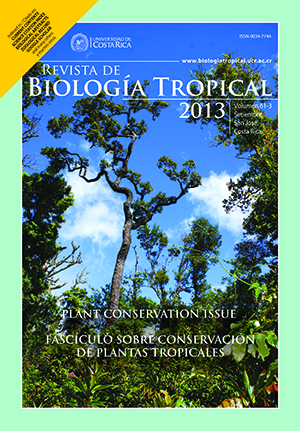Abstract
Seagrasses are one of the most important coastal ecosystems since they promote organic matter flow, nutrient cycling, food availability and refuge. Until now, reports on damages caused by storms and hurricanes on seagrass beds are uncommon and highly variable. The seagrass meadows of the East end of Jardines de la Reina archipelago were surveyed from Nov. 29th to Dec. 5th of 2008, in order to determinate the effects from the passing of Hurricane Paloma: a category three storm on the Saffir-Simpsom scale. A rapid field assessment of the affected areas was carried out using the manta tow technique. In six sites, seagrass was quantitatively evaluated using a 15cm diameter core (four sampling units per site) and shoot density was calculated. Remote sensing techniques were used to estimate seagrass cover. To estimate the percentage of affected areas, a Region of Interest (ROI) was first created over a Landsat image. The percentage of seagrass affected within the ROI was estimated through direct georeferentiation of the contours of the damaged area and with a comparison to the total seagrass extension. To find possible explanations for damages, a false colour image was created using the near infrared band, to highlight the differences between emerged and submerged zones. The direction of winds was estimated using ArcGis 9.2 creating circular buffers, from the centre of the hurricane and generating lines tangent to the buffers. Seagrass in the region was dominated by the angiosperm Thalassia testudinum. Regional mean density was 1 321±721 shoots/m2, a value regarded as high for the Caribbean area. Seagrass meadows were partly affected by sediment accumulation on the shoots of T. testudinum and uprooting rhizomes. The 7.6km2 disturbed area represented 1% of the total seagrass area. Other sites, closer to the centre of the hurricane, did not show any damages on the marine vegetation. The keys location with respect to the hurricane track was the most likely cause of the effects. To the North of the affected area there is an opening among the keys where the generation of waves, currents and turbulence could have occurred. Three years after the hurricane event, both vegetation cover loss and silt re-colonization by macroalgae species were observed within the affected area, by showing a patchily-vegetated landscape. This site is currently undergoing a temporal succession whose assessment demands a monitoring scheme, that will provide interesting information to document its future evolution and responsiveness against upcoming natural or anthropogenic events.Comments
Downloads
Download data is not yet available.






